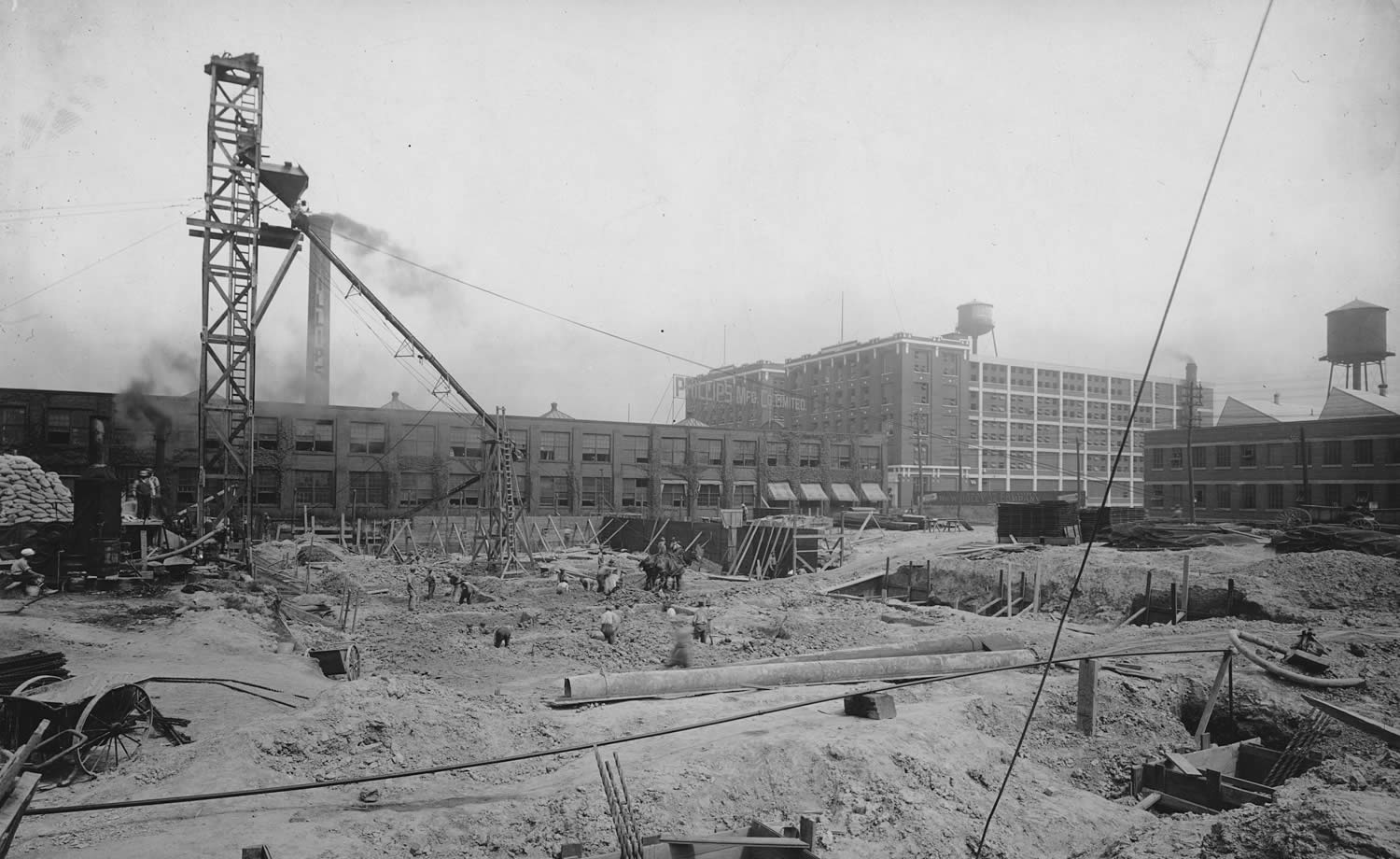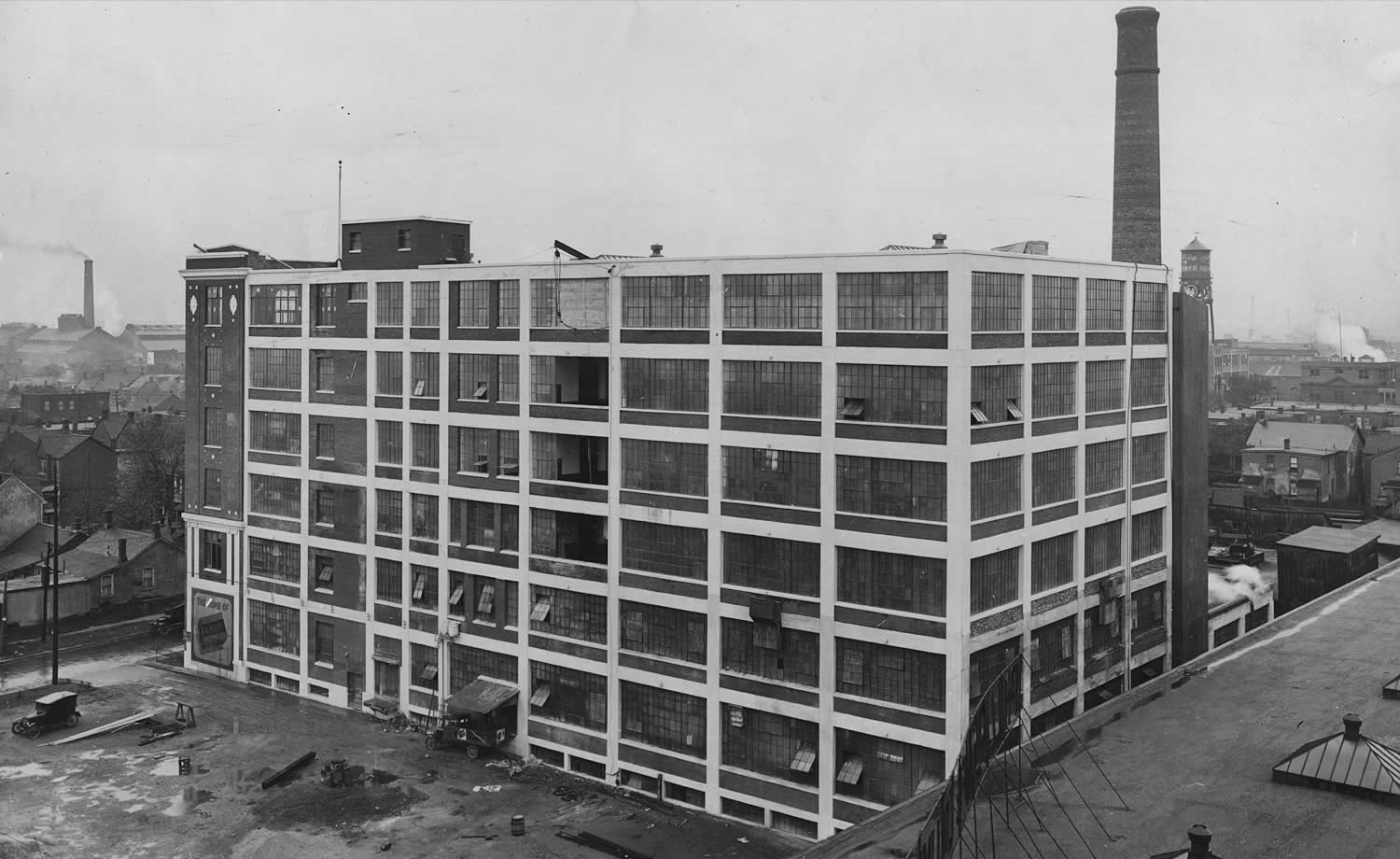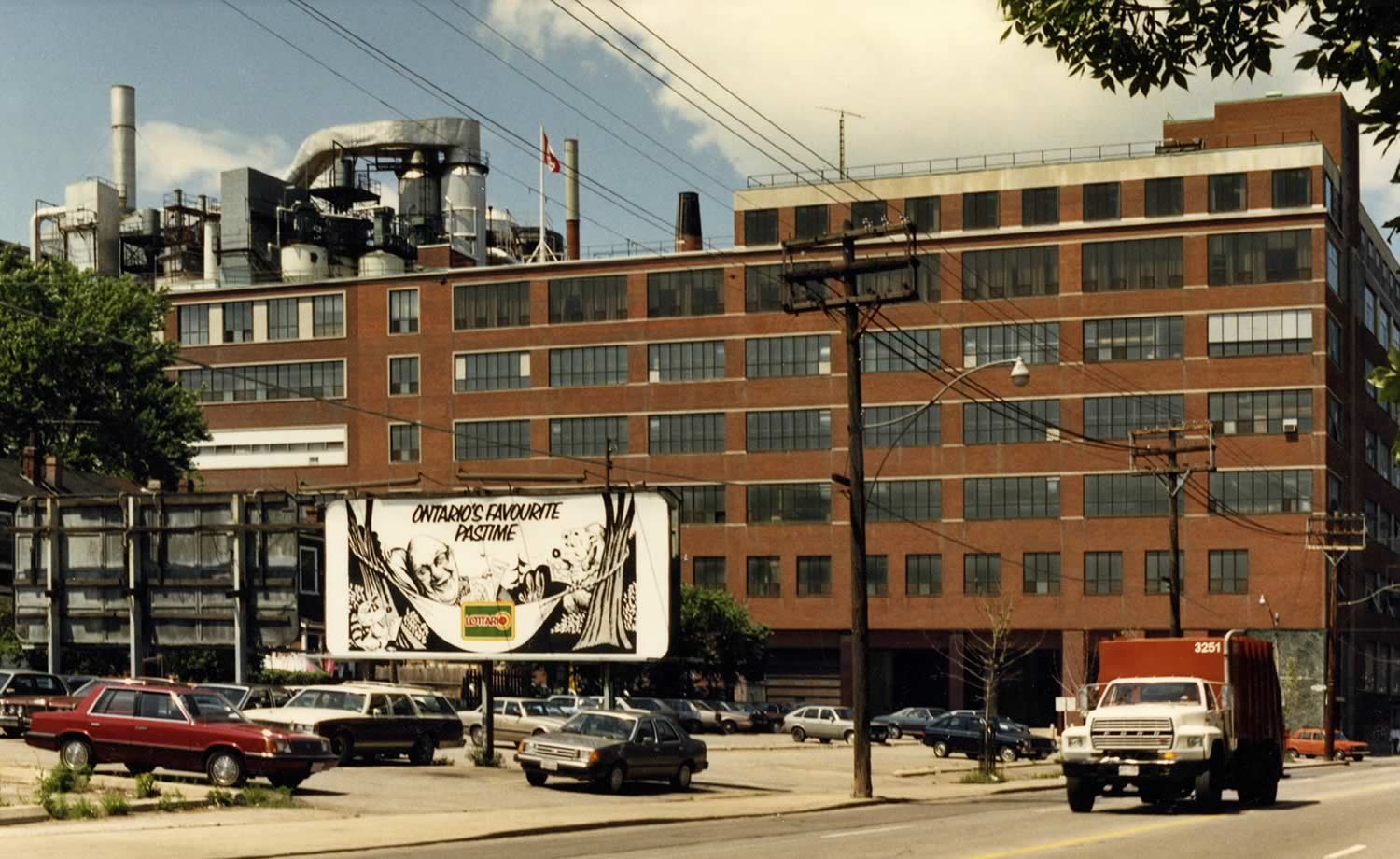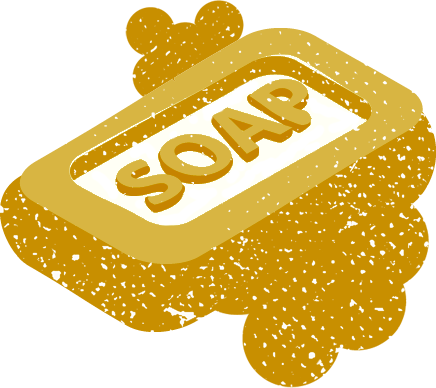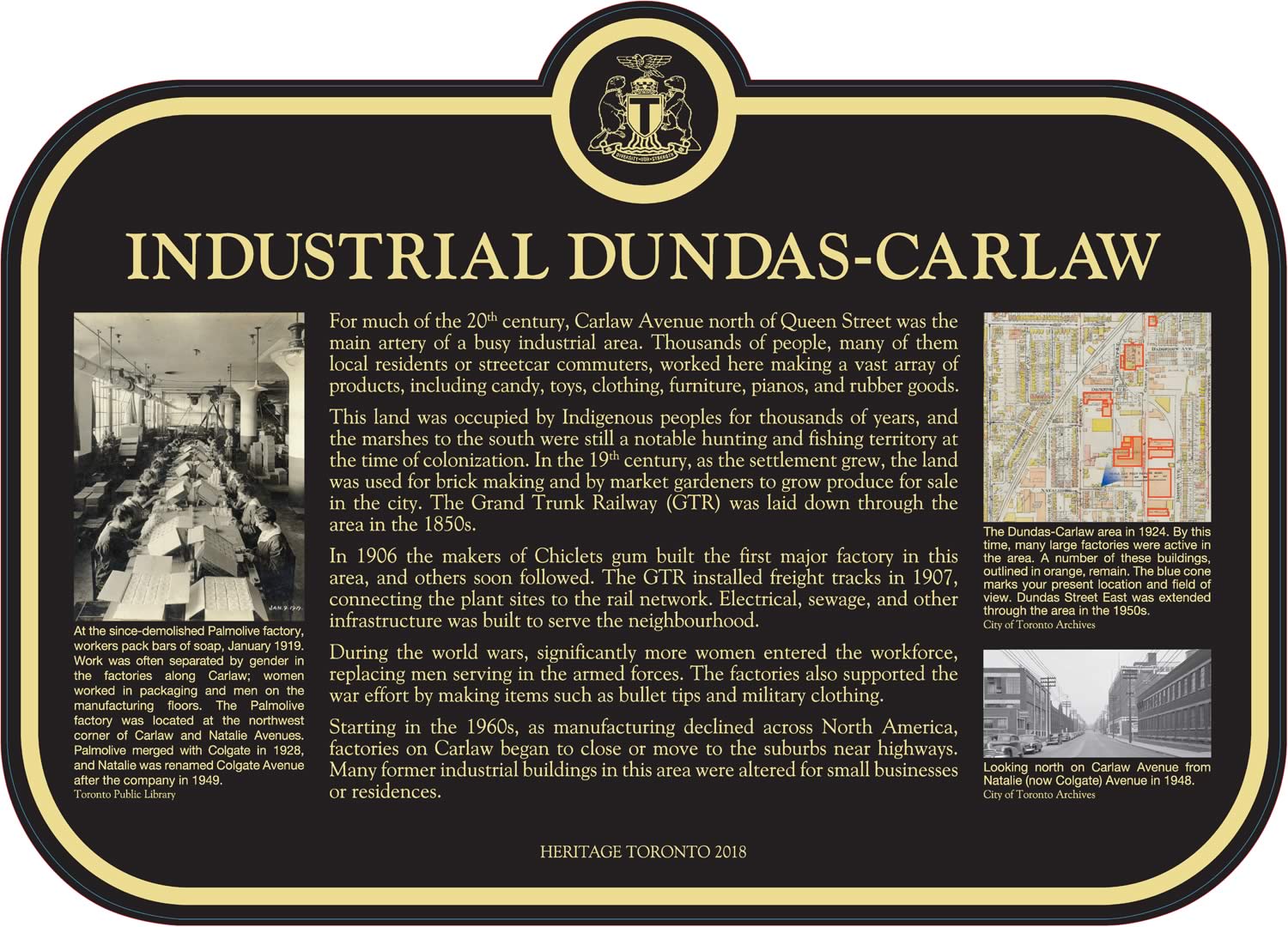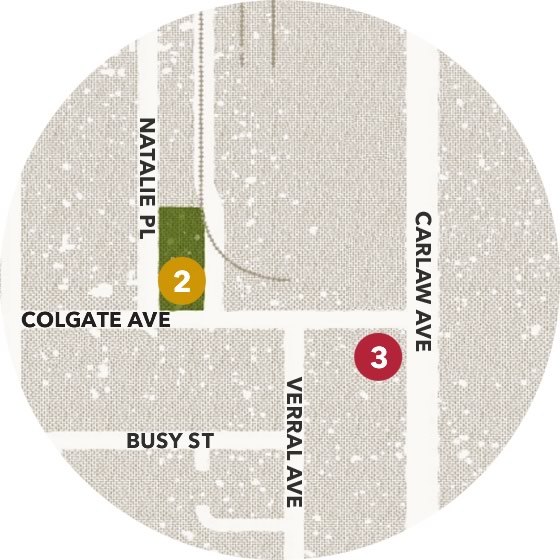If you were on this spot in 1917,


you would have seen workers digging the foundations for a new Palmolive soap factory.
If you were


on this spot in 1917,
you would have seen workers
digging the foundations for a
new Palmolive soap factory.
you would have seen workers digging the foundations for a new Palmolive soap factory.
Colgate-Palmolive
Building
Location:
50 Colgate Ave.
Year:
1917 (demolished 1995)
Architect:
Prack & Perrine
Made:
Soap, toothpaste, cleaning products
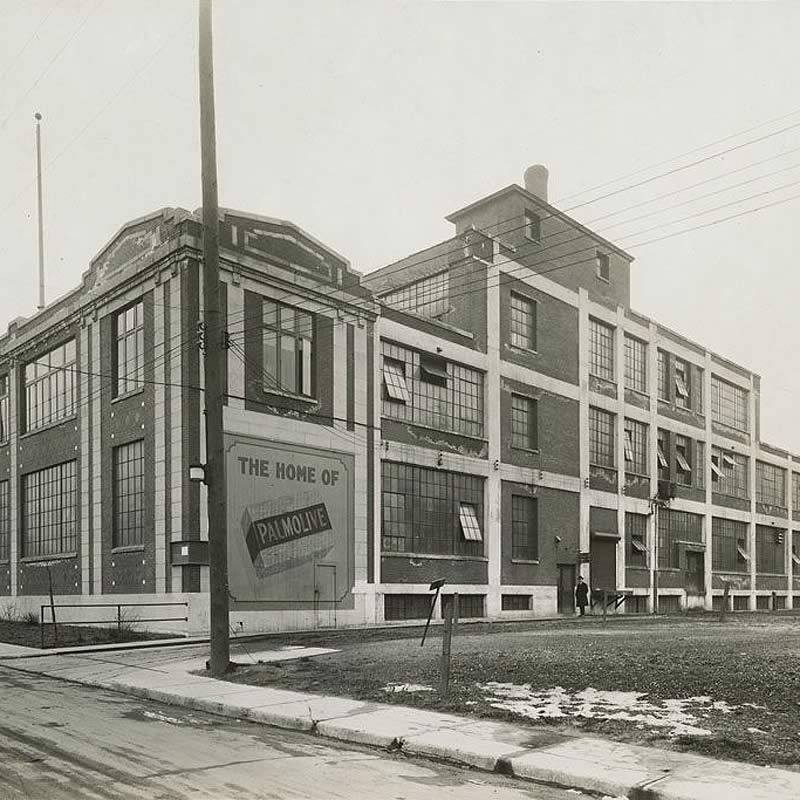
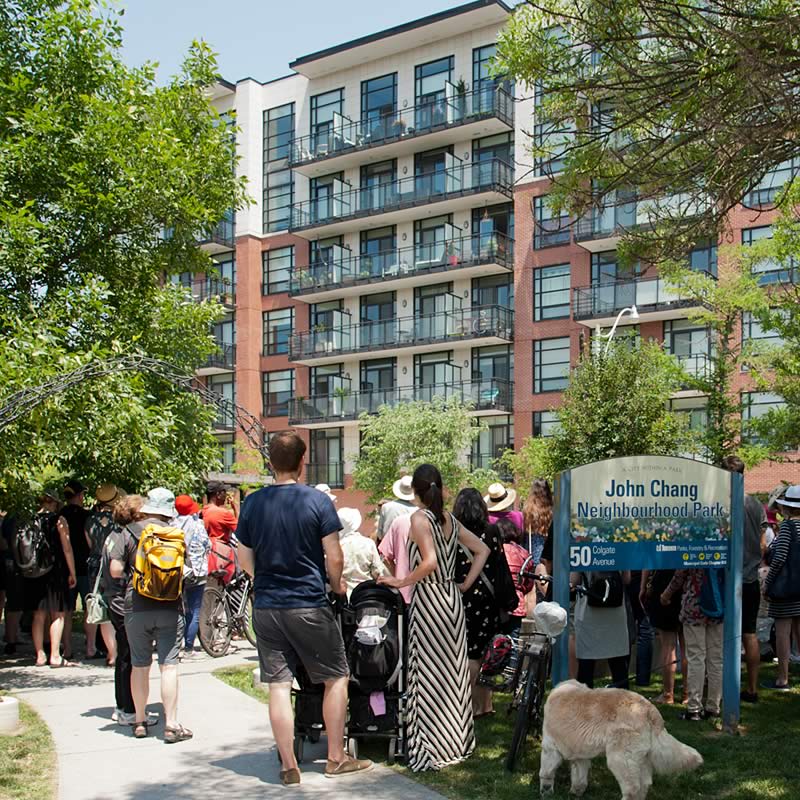
Left: “The Home of Palmolive”, circa 1918.
Library and Archives Canada
Right: John Chang Parkette, with the
condominium building at 88 Colgate Ave
in the background, June 2018.
Image by Herman Custodio
Originally called the B.J. Johnson Soap Company, the American business was renamed for its best-known product, a soap made from palm and olive oils called Palmolive that debuted in 1898.
The product was so successful it allowed the company to expand into Canada and beyond.
Living Memory
“My dad worked at Colgate-
Palmolive around 1950 ... when
he came home from work, he would
go and get washed and only had to
add water to his hair and he would
have a full head of soap lather.
Instant shampoo!!”
Linda Blakey
on Facebook

Colgate Ave. (previously Natalie St.)
was named after the company.
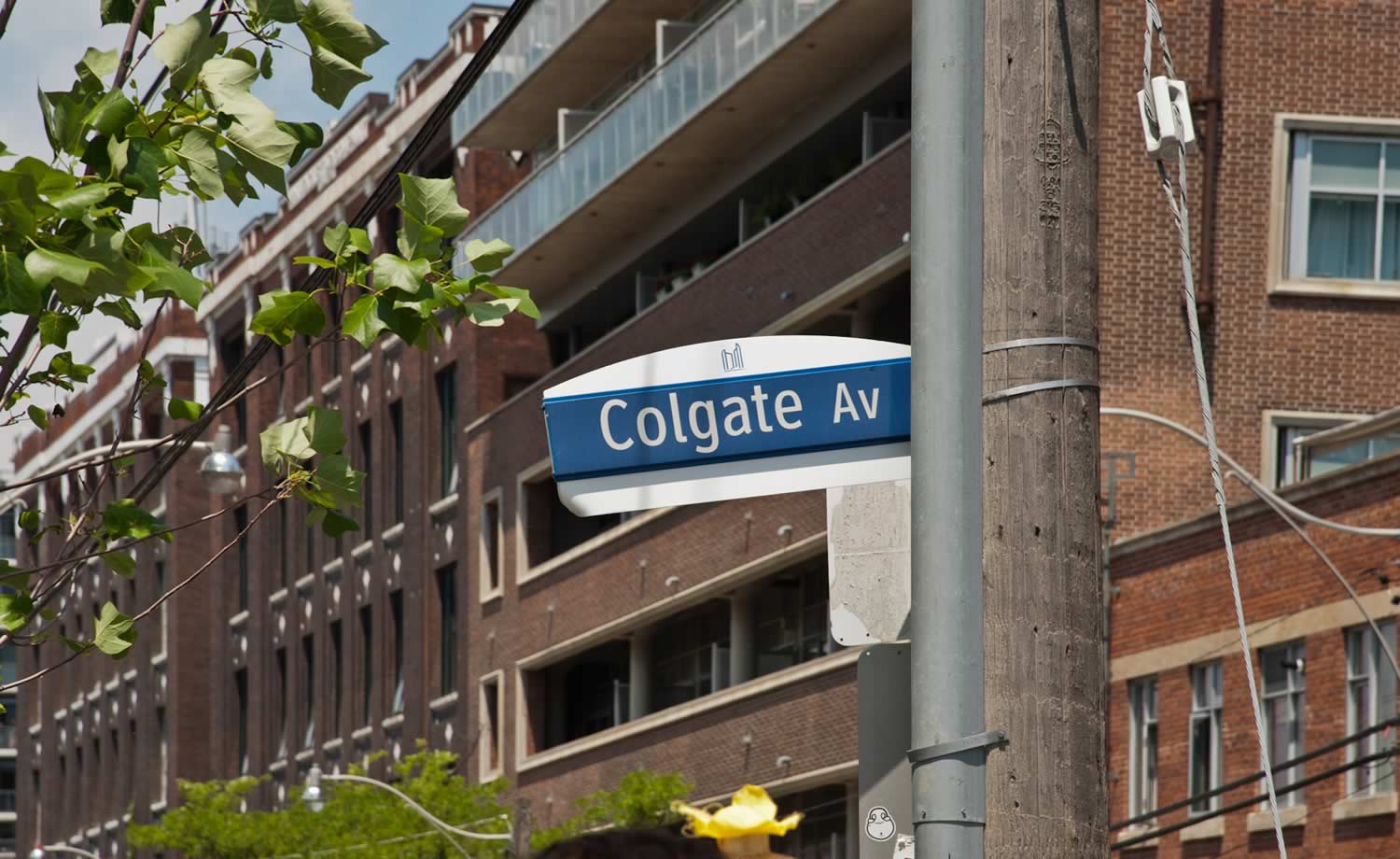
Colgate Ave. street sign, with the Wrigley
building in the background, June 2018.
Image by Herman Custodio
Living Memory
“They had some bad smells coming
out of the [Colgate-Palmolive] factory.
It didn’t smell like soap. It was very
strong ... it would bother your nose.”
Yvonne Nearing
who lived on Carlaw Ave.

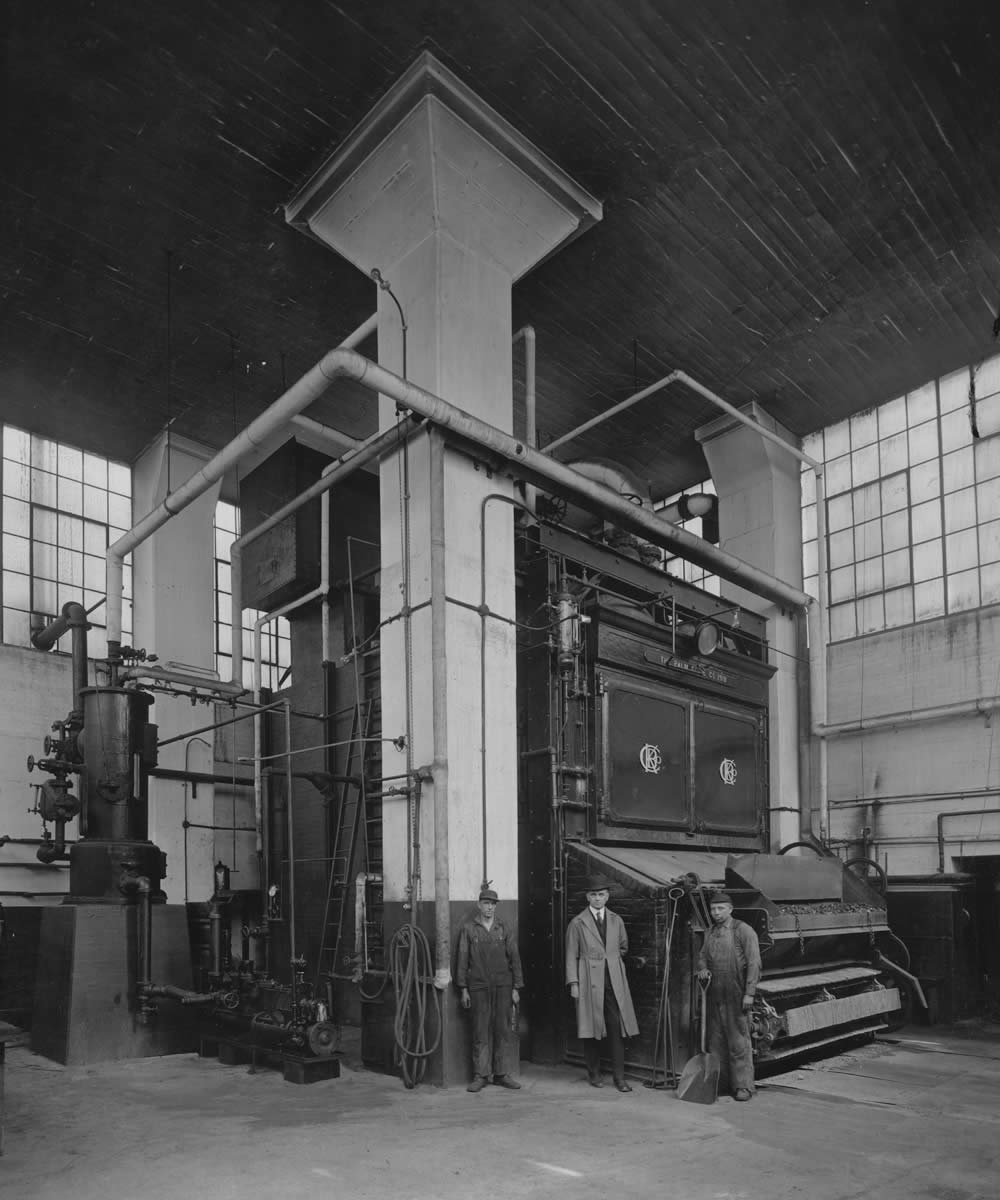
Workers and foreman in front of a soap kettle, circa 1920
Library and Archives Canada
10 massive kettles in this factory boiled fats and oils with soda ash to create soap and glycerin.
Workers and foreman in front of a soap kettle, circa 1920
Library and Archives Canada
Palmolive soap packing line, Toronto, 1919
Image by Pringle & Booth
Toronto Public Library
The finished perfumed soap was cut into bars, wrapped and packaged on a production line staffed by women, and shipped out via a railway loading dock located inside the building.
Palmolive soap packing line, Toronto, 1919
Toronto Public Library
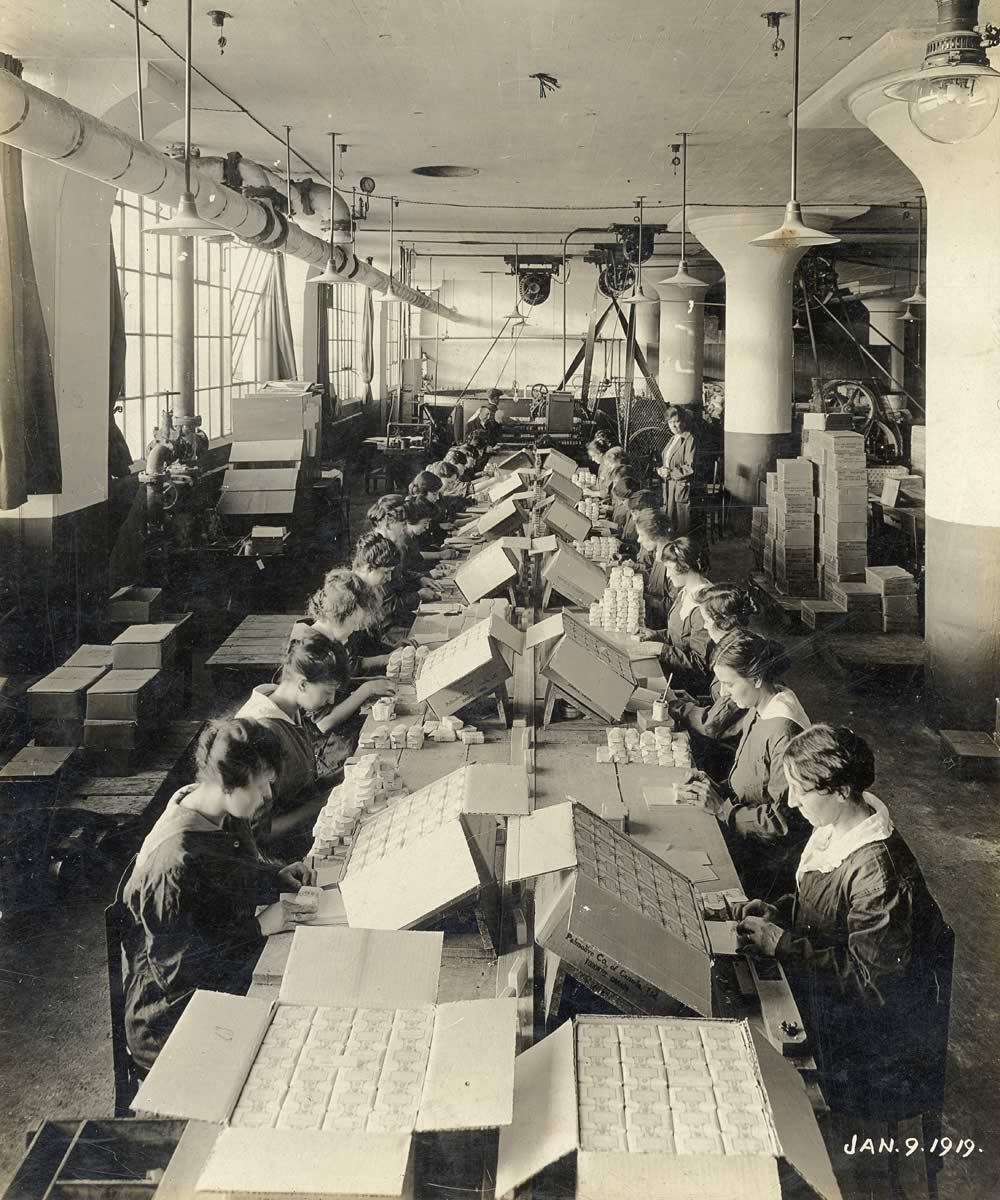
240 people lost their jobs when the Colgate-Palmolive factory closed in the early 1990s.
In 1995, the building was one of the few factories in this area to be demolished.
The site was redeveloped starting in 2012 and the new condo at the corner of Colgate and Carlaw is approximately the same size as the former factory.

Check
it out ...
Smokestacks
You will see them poking out behind buildings throughout this tour. Not in use anymore, they are part of the area’s architectural heritage.
Read the plaque
INDUSTRIAL DUNDAS-CARLAW
For much of the 20th century, Carlaw Avenue north of Queen Street was the main artery of a busy industrial area. Thousands of people, many of them local residents or streetcar commuters, worked here making a vast array of products, including candy, toys, clothing, furniture, pianos, and rubber goods.
This land was occupied by Indigenous peoples for thousands of years, and the marshes to the south were still a notable hunting and fishing territory at the time of colonization. By the 1850s, as the settlement grew, the land was used for brick making and by market gardeners to grow produce for sale in the city. The Grand Trunk Railway (GTR) was laid down through the area in the 1850s.
In 1906 the makers of Chiclets gum built the first major factory in this area, and others soon followed. The GTR installed freight tracks to the plants in 1907. Electrical, sewage, and other infrastructure was built to service the neighbourhood.
During the world wars, significantly more women entered the workforce, replacing men serving in the armed forces. The factories also supported the war effort by making items such as bullet tips and military clothing.
Starting in the 1960s, as manufacturing declined across North America, factories on Carlaw began to close or move to the suburbs near highways. Many former industrial buildings in this area were altered for small businesses or residences.

Ready to hit the next stop?
Head east towards Carlaw Ave. The next stop is at the southwest corner of Colgate Ave. and Carlaw Ave. From here you can see the Rolph-Clark-Stone building on the east side of Carlaw - stay on the west side of Carlaw Ave. for a better view.
Full steam
ahead!







